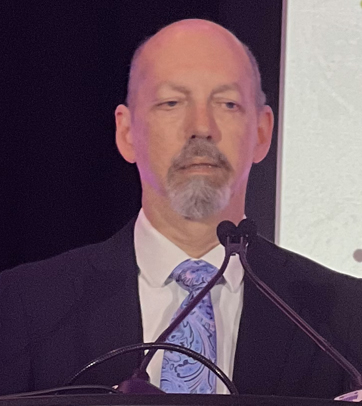


By Philip E. Schaner, MD, PhD
A wealth of data have demonstrated that human papillomavirus (HPV)-associated squamous cell carcinomas of the oropharynx (OPSCC) have superior oncologic outcomes compared to purely tobacco and alcohol-associated OPSCC, and a multitude of clinical trials have sought to de-intensify treatment in the hope of achieving equivalent cure rates while diminishing long term toxicity. One of the strategies under investigation leverages the application of transoral robotic surgery (TORS) or transoral laser microsurgery (TOLS) to diminish disease burden and allow for attenuation of adjuvant therapies. A number of trials have been published in this vein, typically using a risk-adapted strategy to attempt to tailor therapeutic de-intensification to perceived recurrence-risk based on pathology; however, there is variation in risk stratification as well as the application of de-intensification across published trials, and the optimal de-intensification strategies for various risk factors are unclear.
Investigators from Washington University in St. Louis add to the data regarding de-intensified adjuvant treatment by reporting long term efficacy results of a non-randomized, multi-arm Phase II trial at the 2024 Multidisciplinary Head and Neck Cancers Symposium. In this trial patients with HPV (+) OPSCC received surgical resection consisting of either TORS or TOLS accompanied by a conventional selective neck dissection. Patients with pT1-2N0, pT4, and pN3 malignancies were excluded. For patients with intermediate-risk pathology (defined as pT3 or pN2 disease, without high-risk features) a total of 42 Gy over 21 fractions was delivered. For patients with high-risk pathology (defined as having ENE and/or a positive margin) 42 Gy over 21 fractions was delivered concurrent with one cycle of cisplatin (at 100 mg /m2). Efficacy endpoints including progression-free survival (PFS) and overall survival (OS) were reported.
A total of 30 patients were enrolled on the intermediate-risk arm, and 20 on the high-risk arm. The majority of patients were Stage I (76%) and had < 10 PY of smoking (64%). The median follow-up was 46.2 months. In the intermediate-risk cohort estimated 4-year PFS was 97% with one relapse, and OS was 100%. In the high-risk cohort estimated 4-year PFS was 90% with two relapses, and OS was 100%.
These data add to the growing body of evidence indicating that with appropriate risk stratification, de-intensification of treatment may yield acceptable oncologic outcomes. Although toxicity endpoints were not reported, other de-intensification trials would support the desired outcome of improved quality of life; critically, cancer control rates in this trial were excellent with a median follow-up of almost four years.
However, the optimal combination of de-intensification of radiation dose with or without systemic therapy, and the extent to which treatment attenuation can be safely diminished for different pathologic risk factors, remains unclear. For example, with respect to the high-risk subgroup in the Washington University trial, the Mayo Clinic MC1273/MC1675 trials investigated adjuvant de-intensification using twice daily radiotherapy to 36 Gy for high-risk patients (defined as having ENE) with two cycles of concurrent docetaxel. In data presented at ASTRO in 2021 and 2022, the high-risk cohort with pN2/ENE disease experienced higher failure rates (two-year PFS 42.9%) than reported in the Washington University trial for patient with ENE. Of course, comparative analyses between different de-intensification strategies must await full publication of mature trial data and will be hypothesis-generating in nature. Ideally, multi-institutional phase III data would be present prior to changing standard of care practice, but as data accumulates for de-intensification targeted to specific pathologic subsets of HPV (+) OPSCC, oncologically sound thresholds for de-intensification may converge into consensus.
Abstract 14 - Long-Term Efficacy of Risk-Directed, De-Escalated Post-Operative Adjuvant Therapy for Surgically Resected Locally Advanced, Human Papillomavirus-Positive Oropharynx Squamous-Cell Carcinoma (HPV+ OPSCC): A Non-Randomized, Multi-Arm Phase 2 Trial was presented during the Plenary II session at the 2024 Multidisciplinary Head and Neck Cancers Symposium on March 1, 2024.